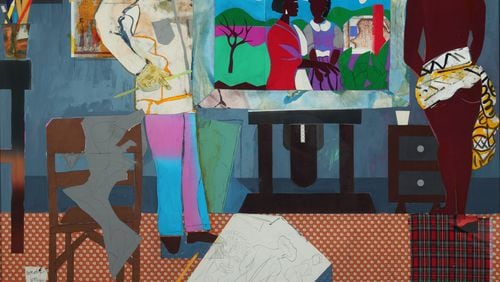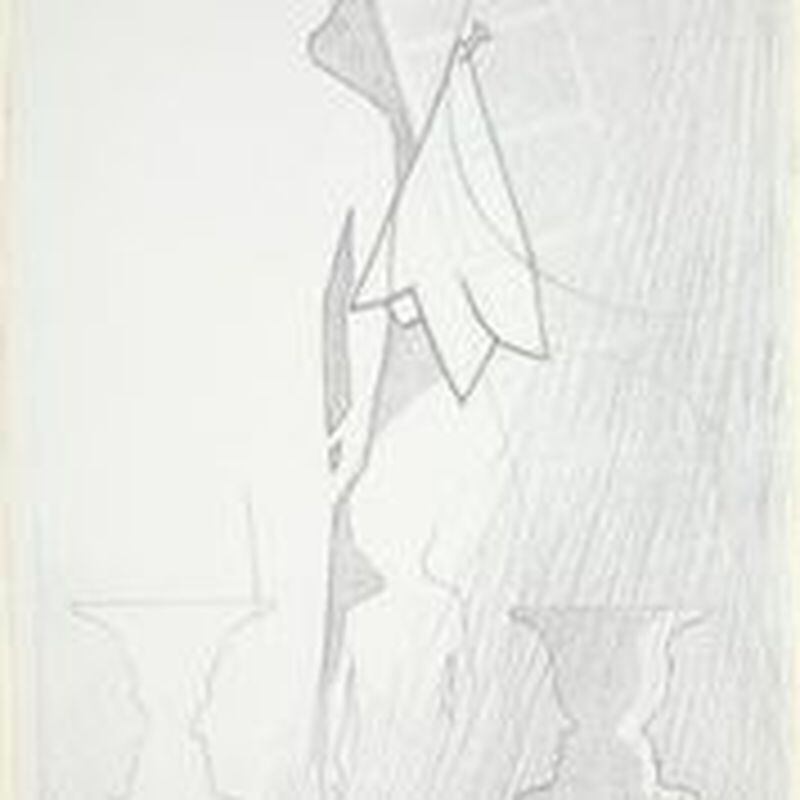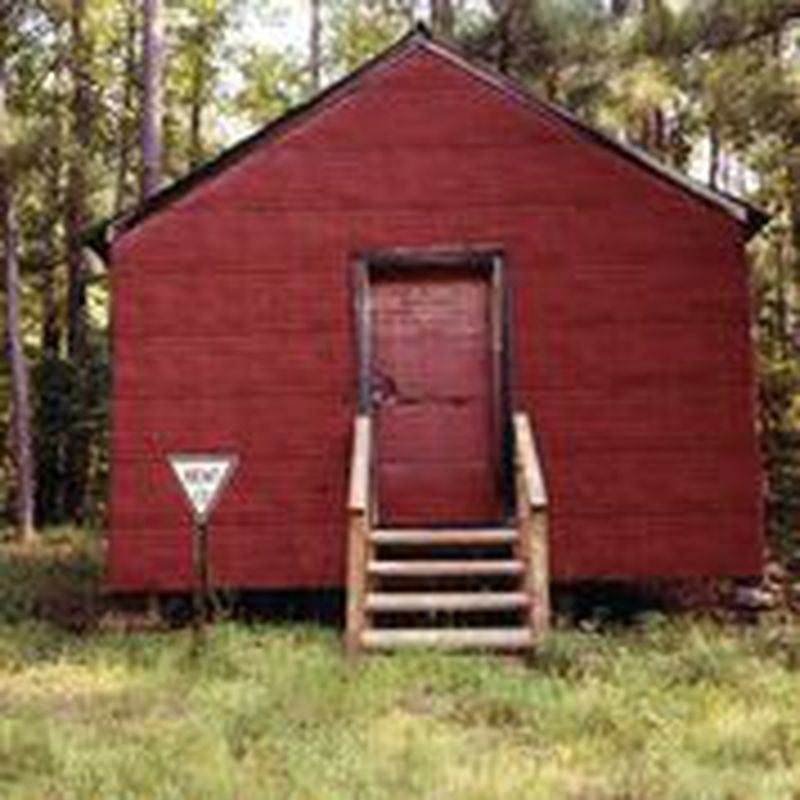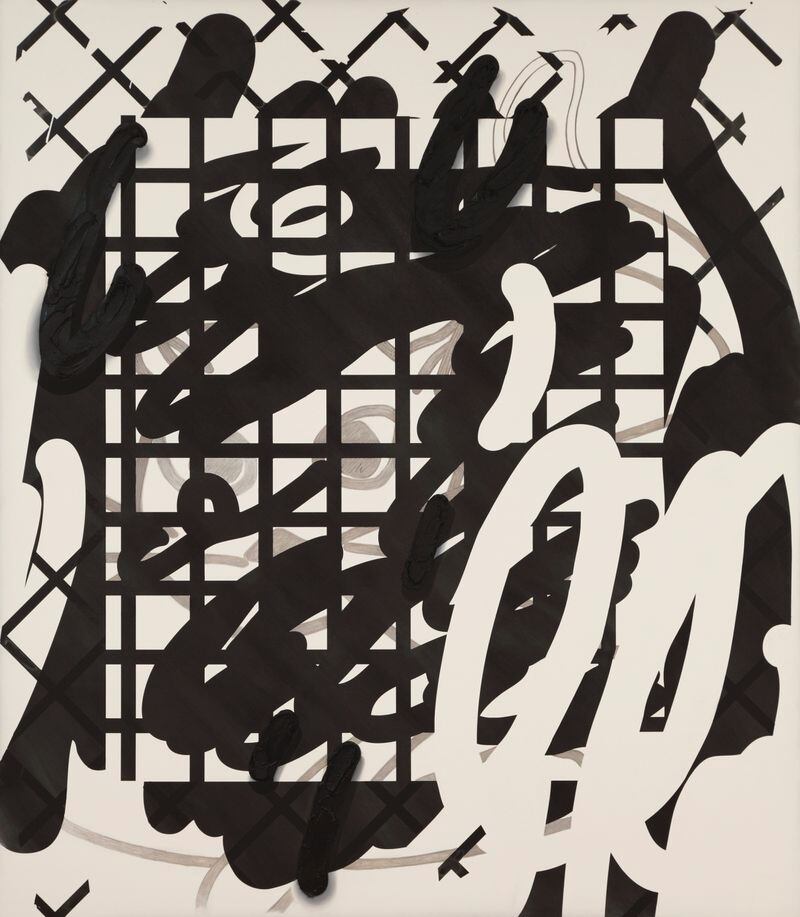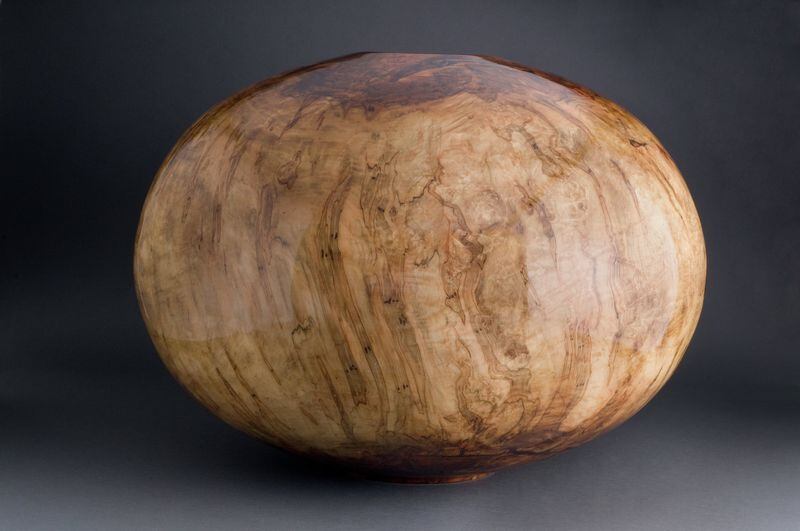As a general museum with seven curatorial departments, the High Museum of Art has built an ever-evolving permanent collection of more than 14,000 works that represent diverse art expressions.
Still, as a leading Southeastern art museum, the High continues to put some emphasis on acquiring and exhibiting work by artists with roots in the region.
In announcing recently that it has added more than 600 works in fiscal 2014, the High spotlighted pieces Romare Bearden, Jasper Johns and William Christenberry: Romare Bearden, Jasper Johns and William Christenberry.
PHOTO GALLERY: To view 11 of the High Museum of Arts' recent acquisitions, click here.
A quick look at works acquired by the three artists (edited from information provided by the museum):
Romare Bearden's "Profile/Part II, The Thirties: Artist with Painting and Model" (1981), collage on fiberboard, 44 by 56 inches
Joining eight other works by Bearden in the High’s collection of American art, “Profile/Part II, The Thirties: Artist with Painting and Model” (1981) is the artist’s only known self-portrait. This late-career collage is a retrospective work in which Bearden brings together important memories and spiritual influences from his youth in the South with broader art historical themes that guided his career for more than four decades. “Artist with Painting and Model” is the culminating work of Bearden’s “Profile” series, a two-part collection of collages based on his memories of the 1930s and '40s, and it is his only work that directly references his role as an artist.
In the collage, Bearden depicts himself in his studio holding a brush with his arm draped over a painting. This “painting within the painting” is a rendition of “The Visitation” (1941), a tempura on paper that Bearden considered to be among his key works. Elsewhere in the studio are motifs that allude to his art historical sources and artistic training, contributing to the painting’s narrative of personal history that also recognizes the legacy of past and present masters of Western art.
The High will display “Profile/Part II, The Thirties: Artist with Painting and Model” as the centerpiece of a focused 2015 exhibition of works by Bearden from the museum’s collection.
Credit: hpousner
Credit: hpousner
Jasper Johns' "Untitled" (2010), graphite on paper, 30 5/16 by 22 7/16 inches
The first drawing by Augusta native Jasper Johns to enter the museum’s Collection of Modern and Contemporary Art, “Untitled” (2010) complements seven prints by Johns in the High’s permanent collection. The graphite drawing is from a recent series in which the artist revisits a set of images from almost 30 years ago in his cycle of paintings titled “The Seasons” (1985-86).
When this imagery appeared in the mid-’80s as a frontispiece for a book of Wallace Stevens poems, it provided yet another enigmatic facet to the iconography of Johns’ late career, populated by cryptic image puzzles, thematic ciphers related to the history of painting and the artist's autobiography. The subject of the “Seasons” paintings, to which Johns alludes in this drawing, is in fact an allegory of the artist’s life, synthesizing a dreamlike reflection on more than 60 years of his career.
This new acquisition is on view in the High exhibition “Top Drawer: Select Drawings from the High’s Collection.”
Credit: hpousner
Credit: hpousner
William Christenberry – 109 photographs (1964-2001), various processes and dimensions
Utilizing a recently established fund for collecting bodies of work by Southern photographers, the High acquired a group of more than 100 vintage color prints by Tuscaloosa, Ala., native Christenberry, making the museum one of the most significant institutional repositories of Christenberry’s work in the U.S.
Christenberry has made a career of exploring Southern heritage through a variety of media, including photography, drawing, painting and sculpture. His work addresses issues of time, memory and change in the Southern landscape, and he is well-known for systematically recording the evolution of vernacular architecture over the course of decades.
The High was given the opportunity to select from top examples of Christenberry’s long career from the artist’s archives in Washington, D.C., and the photographs acquired will join 26 prints by Christenberry already in the museum’s holdings.
In addition to these works by artists from the Southeast, 89 works by 29 Atlanta-based artists, including Susan Cofer, Gyun Hur and Philip Moultrop, also were recently added to the collection.
Additional acquisition highlights across the museum’s curatorial departments:
American Art
• "Apple Blossoms," gouache on paper (ca. 1885), by Fidelia Bridges, is the second work by her to enter the High’s collection and adds to the growing list of works by women artists in the museum’s historical holdings.
• "Reclining Nude," an oil on paper (ca. 1945), by Leon Kroll, is the first work by him to enter the High’s collection. The painting features a female with fair skin, an oval face, curvaceous features and dark hair, a look that ultimately became known as the “Kroll type.”
Modern and Contemporary Art
• "January Series" (1992), one of 17 chalk and charcoal cartoons gifted to the High by Alex Katz (making the High’s holdings of Katz’s cartoons the largest in the U.S.). Cartoons have been an important aspect of Katz’s painting process, and these works join later landscapes by the artist to more fully represent his career arc and artistic practice in the High’s collection.
Credit: hpousner
Credit: hpousner
• "Untitled" (2013), a painting by American artist Laura Owens (one of 12 large-scale works from her recent solo exhibition). Owens combines traditions of classical modernism with references to popular culture in her work. In “Untitled,” she embeds an image of a cat drawn in a lively, stylized manner that evokes the graphic style of both Henri Matisse and Andy Warhol.
• "Daisy (2007)," a painting by Brooklyn-based artist Joyce Pensato based on the cartoon character Daisy Duck. The enamel and metallic paint on linen work is indicative of Pensato’s aggressive, painterly handling of materials and joins other recent gifts from the Alex Katz Foundation (including the Owens work), which reinterpret historic painting conventions.
• "Bat Parts" (1994), a pencil drawing by Al Taylor that joins a growing number of works by the artist in the High’s collection. Part of a series of drawings and sculptures, "Bat Parts" demonstrates the artist’s blurring of boundaries between two dimensional drawings and three dimensional constructions – which he once referred to as “drawings in space” or “drawing instruments.”
Decorative Arts and Design
• "Physic Garden" (2014), a two-story tall, hand-painted "plate painting" by contemporary ceramic designer Molly Hatch. Commissioned by the High, the work is comprised of 475 plates featuring an original design inspired by two ca. 1755 Chelsea plates from the High's Frances and Emory Cocke Collection of English Ceramics. It is the largest installation of Hatch's career.
• "Centipede III Bench" (2009) by Mexican designer Héctor Esrawe.
• A rare oak and leather chair (1905-07) from Gustav Stickley’s Craftsman Workshops. As one of Stickley’s most favored designs, this piece by one of the predominant American contributors to the Arts and Craft movement enhances the historic collection’s holdings from this period.
Credit: hpousner
Credit: hpousner
• A large-scale wooden bowl made of red leopard maple by Atlanta-based artist Philip Moulthrop (2013). It joins a substantial sampling of his father Edward Moulthrop's work in the Museum's holdings and is the second piece by Philip Moulthrop added to the collection.
European Art
• Jean Baptiste Claude Chatelain was a French-born English landscape artist considered by many to be a precursor to Thomas Gainsborough, the leading landscape painter in England in the latter half of the 18th century. The drawing "A Classical Landscape" (ca. 1750) is the first work by the artist to enter the High’s collection, enhancing the museum’s growing British drawing collection.
• Lola Melea, known on stage as Lola de Valence, was a member of a dance troupe from Madrid that appeared at the Hippodrome in Paris during the late summer and fall of 1862. Her magnificent, glittering costume made an ideal subject for an Édouard Manet portrait. Manet later translated the painting in print, gradually completing the composition over a series of states. The High’s recently acquired print, "Lola de Valence" (1863), is in the rare sixth state of eight. This will be the sixth and finest Manet print to enter the museum’s collection.
• "Mountainous Landscape" (ca. 1885) by Adolph Menzel is the second drawing by the artist to enter the High’s collection. Menzel, a German exponent of 19th century realism, visited Interlaken, Switzerland, in the summer of 1885, and this sojourn provided him with subjects for numerous drawings.
• Jean-Baptiste Carpeaux was one of the leading sculptors of 19th century France. Favored by the exiled imperial family, Carpeaux was summoned to England to sculpt a bust of the dying emperor. Carpeaux’s "Bust of Napoleon III" (1873) is candid portrait of a war-weary emperor fallen from glory and is the first work by the artist to enter the High’s collection.
Photography
• "Aquarium, Atlanta, Georgia" (2013), a large-scale, chromogenic print by Thomas Struth taken inside the Georgia Aquarium. This work adds to the High’s Struth holdings, which are among the most significant in the nation.
• 19 works by Abelardo Morell, including 10 photographs commissioned by the High in 2014 for its "Picturing the South" series, which asks noted photographers to turn their lenses toward the American South. With this acquisition, the High holds a representative cross-section of Morell's career to date and remains one of the top institutional collections of his work.
• 26 prints by Brett Weston, the second son of influential, early 20th century photographer Edward Weston. This acquisition complements the High’s holdings of post-war American work, including prints by Weston’s colleagues Harry Callahan and Wynn Bullock.
• A group of 48 prints by influential French photographer Eugène Atget, making the High among the primary repositories of his work in the U.S. With this gift, the High’s Atget collection now exceeds 300 prints.
African Art
• Finial from a dance staff for the Yoruba diety Eshu Elegba (20th century) by Bamgboye of Odò Owá, a Nigerian artist. This wooden sculpture is unique among the High’s holdings of works, by virtue of being attributed to a particular artist, and also adds depth to the High’s collection of Yoruba art.
• Adding a historical dimension to the High’s Yoruba art collection is an ivory and coconut shell rattle (ca. 15th-16th century) by an Owo artist (Nigeria). The city of Owo flourished as the capital of one of the most important Yoruba city-states and was famous for its ivory carvers.
• 20th century wooden ceremonial spoon (or ladle) by a Dan artist represents a classic West African art form that until now was not represented in the High’s collection. Such spoons are prestige objects considered portraits of the women they honor.
About the Author
